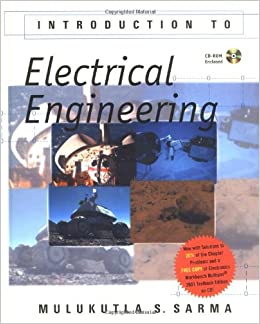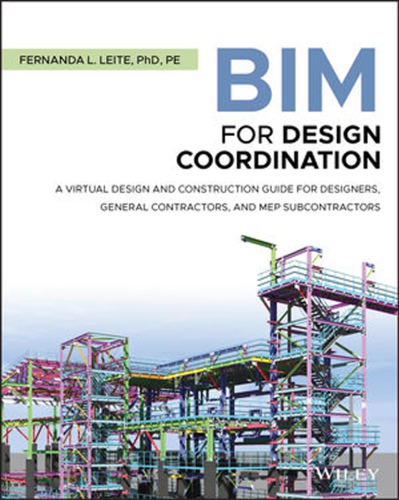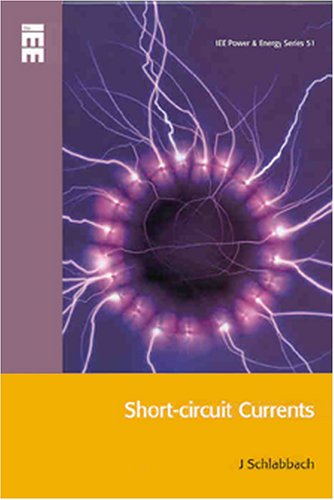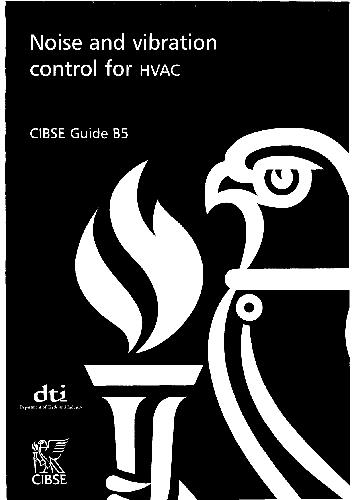| Book Name: | [PDF] Introduction to Electrical Engineering By Mulukutla S Sarma |
| Category: | Electrical books ( EE ) |
| Free Download: | Available |
Introduction to Electrical Engineering By Mulukutla S Sarma :: The purpose of this text is to present a problem-oriented introductory survey of electrical engineering, by arousing student enthusiasm while addressing the underlying concepts and methods behind various applications ranging from consumer gadgets and biomedical electronics to sophisticated instrumentation systems, computers, and multifarious electric machinery. The focus is on acquainting students majroing in all branches of engineering and science, especially in courses for non-electrical-engieering majors, with the nature of the subject and the potentialities of its techniques, while emphasizing the principles. Sine principles and concepts are most effectively taught by means of a problem-oriented course, judicially selected topics are treated in sufficient depth so as to permit the assignment of adequately challenging problems which tend to implant the relevant principles in student’s minds.
In addition to an academic-year (two semesters or three quarters) introductory course traditionally offered to non-electrical engineering majors in a number of universities.
Modern technology demands a team approach in which electrical engineers and non-electrical engineers have to work together sharing a common technical vocabulary.
This text is a result based on almost 40 years of experience teaching a wide variety of courses to electrical as well as non-electrical majors, an dmore particularly on the need to answer many of the questions raised by so many of my students.
Download also Newnes Electrical Engineer’s Handbook PDF
The book is divided into five parts in order to provide flexibility. A glance at the Table of Contents will show that Part I concerns itself with basic electric circuits, in which circuit concepts, analysis techniques, time-dependent analysis including transients, as well as three-phase circuits are covered. Part II deals with electronic ananlog and digital systems, in which analog and digital building blocks are considered along with operational amplifiers, semiconductor devices, integrated circuits, and digital circuits.
Part III of the book is devoted to energy systems, in which AC power systems, magnetic circuits and transformers, principles of electromechanics, and rotating machines causing electromechanical energy conversion are presented. Part IV of the text deals with information systems, in which the underlying principles of signal processing and communication systems are included. Finally, Part V presents control systems, including the concepts of feedback control, digital control, and power semiconductor-controlled drives.
The text material is organized for optimum flexibility, so that certain topics my be omitted without loss of continuity when lack of time or interest dictates.
Introduction to Electrical Engineering By Mulukutla S Sarma

Introduction to Electrical Engineering: Book and CD-ROM PDF
Author(s): Mulukutla S. Sarma
Series: The Oxford Series in Electrical and Computer Engineering
Publisher: Oxford University Press, USA, Year: 2000
ISBN: 0195136047,9780195136043
Book Description:
Comprehensive, up-to-date, and problem-oriented, Introduction to Electrical Engineering is ideal for courses that introduce nonelectrical engineering majors to the language and principles of electrical engineering. It can also be used in undergraduate survey courses taken by electrical engineering majors. Covering a uniquely broad range of topics, this text discusses the underlying concepts and methods behind various electrical engineering applications–from consumer gadgets and biomedical electronics to sophisticated instrumentation systems, computers, and electric machinery. Sarma highlights basic physical concepts while also emphasizing mathematical techniques, motivating students to learn the material in a logical sequence beginning with physical principles and extending to processes, modeling, using analytical techniques, and finally, designing.
Book Features
*Incorporates practical and open-ended case studies at the end of each chapter
*Includes over 1,000 end-of-chapter problems, a wealth of examples, and over 1,500 illustrations
*Offers comprehensive chapters on signal processing, control systems, and communication systems
*Provides integrated coverage of MATLAB® and SPICE
*Adopts a modern focus on design and teamwork
*Contains complete solutions to 20% of the end-of-chapter problems on http://www.mssarma.org
Includes helpful appendices on the FE examination; mathematical relations; solution of simultaneous equations; complex numbers; Fourier series; Laplace transforms; and more
For all undergrad freshmen students or anyone stepping into this ocean of electrical engineer, the first thing you should do is to keep distance from this useless book. This book will just create an aversion in you towards EE. You will not solve 90% of the problems by reading the chapter, because the chapters lack clarity.
You will be wasting money without learning anything.
Read other reviews and then decide yourself.
The best book for basic electrical engineering is the book by ALLAN HAMBLEY.
Introduction to Electrical Engineering PDF
Related Results : 18-100 introduction to electrical and computer engineering,an introduction to electrical engineering,an introduction to electrical engineering materials,an introduction to electrical engineering materials by indulkar free download,an introduction to electrical engineering materials indulkar pdfan introduction to electrical engineering materials indulkar pdf download,
Related More Books
See More POST On : Engineering Books









![[PDF] Draw Buildings and Cities in 15 Minutes Draw Buildings and Cities in 15 Minutes pdf](https://www.freepdfbook.com/wp-content/uploads/2021/06/Draw-Buildings-and-Cities-in-15-Minutes-218x150.jpg)








![[PDF] Digital Image Processing An Algorithmic Introduction Using Java Digital Image Processing An Algorithmic Introduction Using Java](https://www.freepdfbook.com/wp-content/uploads/2022/06/Digital-Image-Processing-An-Algorithmic-Introduction-Using-Java.jpg)




![[PDF] 43 Years JEE ADVANCED + JEE MAIN Chapterwise & Topicwise Solved Papers 43 Years JEE ADVANCED (1978-2020) + JEE MAIN Chapterwise & Topicwise Solved Papers Physics PDF](https://www.freepdfbook.com/wp-content/uploads/2022/03/43-Years-JEE-ADVANCED-1978-2020.jpg)

![[PDF] Problems in Physical Chemistry for JEE (Main & Advanced) Problems in Physical Chemistry for JEE (Main & Advanced) Free PDF Book Download](https://www.freepdfbook.com/wp-content/uploads/2022/03/Problems-in-Physical-Chemistry-for-JEE-Main-Advanced.jpg)
![[PDF] Engineering Physics (McGraw Hill)](https://www.freepdfbook.com/wp-content/uploads/2021/05/bafc8c2685bb6823a9c56134f7fba5df.jpeg)

![[PDF] Engineering Chemistry By Shashi Chawla](https://www.freepdfbook.com/wp-content/uploads/2022/05/Theory-And-Practicals-of-Engineering-Chemistry-By-Shashi-Chawla-free-pdf-book.jpeg)
![[PDF] Chemistry: An Introduction to Organic, Inorganic & Physical Chemistry Chemistry: An Introduction to Organic, Inorganic & Physical Chemistry](https://www.freepdfbook.com/wp-content/uploads/2022/04/Chemistry-An-Introduction-to-Organic-Inorganic-Physical-Chemistry.jpg)
![[PDF] Essentials of Physical Chemistry Essentials of Physical Chemistry Free PDF Book by Bahl](https://www.freepdfbook.com/wp-content/uploads/2022/04/Essentials-of-Physical-Chemistry-bahl.jpg)
![[PDF] Biological control of plant-parasitic nematodes: soil ecosystem management in sustainable agriculture Biological control of plant-parasitic nematodes: soil ecosystem management in sustainable agriculture](https://www.freepdfbook.com/wp-content/uploads/2022/05/Biological-control-of-plant-parasitic-nematodes-soil-ecosystem-management-in-sustainable-agriculture.jpg)
![[PDF] Human Anatomy: Color Atlas and Textbook Human Anatomy: Color Atlas and Textbook Free PDF Book](https://www.freepdfbook.com/wp-content/uploads/2022/05/Human-Anatomy-Color-Atlas-and-Textbook.jpg)
![[PDF] Concepts of Biology Book [Free Download]](https://www.freepdfbook.com/wp-content/uploads/2022/05/Concepts-of-Biology.jpg)
![[PDF] Essentials of Biology [Free Download] Essentials of Biology Free PDF BOok Download](https://www.freepdfbook.com/wp-content/uploads/2022/05/Essentials-of-Biology-Free-PDF-Book-Downlaod.jpg)
![[PDF] Human Biology Book [Free Download]](https://www.freepdfbook.com/wp-content/uploads/2022/05/PDF-Human-Biology-Book-Free-Download.jpg)


